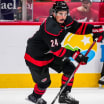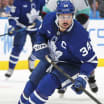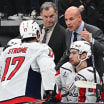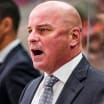USA Hockey hoping to boost U.S.-born goalies in NHL
Coaching program will aim to help Americans play majority of League's minutes at position by 2030
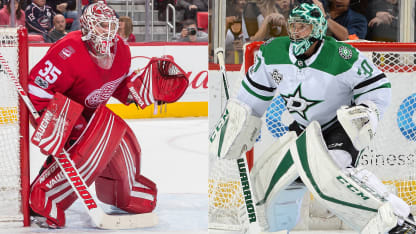
Vancouver Canucks goalie prospect Thatcher Demko's dad used to book lessons with coaches in other cities when his youth teams traveled to make up for a lack of position-specific resources in his hometown of San Diego.
Dallas Stars starter Ben Bishop didn't get his first goaltending coach until he was at the University of Maine.
All three succeeded despite a lack of dedicated position coaching as kids, but that is a difficult road to navigate.
USA Hockey, in an effort to make things easier for the next generation of goalies, is launching a formal goaltending coach education and certification program in the spring. It is part of a goal to have American goalies play 51 percent of the minutes in the NHL by 2030.
"It has become a battle cry for us within USA Hockey at multiple levels," Phil Osaer, manager of youth goaltending for USA Hockey, said of the "51 in '30" mantra.
If that sounds ambitious, consider the increase in United States-born goaltenders in the League during the past 10 years.
USA Hockey uses 2007 as its measuring stick because that was the year it added a full-time goaltending coach to its National Team Development Program (NTDP). During 2007-08, American goalies played 11.45 percent of NHL minutes. In 2015-16, the number was up to 22.31 percent. It dipped to just under 20 percent last season with the injury to Jonathan Quick, a workhorse with the Los Angeles Kings, but it was up to 23.4 percent through Nov. 15.
"That's pretty impressive," Howard said of minutes for U.S.-born goalies doubling during the past decade. "And [the 51-in-'30 target] is a very lofty goal but with USA Hockey the game is growing constantly."
There were 13 U.S.-born goalies in the NHL this season on opening night, and three teams had two Americans at the position: the Ottawa Senators (Craig Anderson, Mike Condon), New Jersey Devils (Cory Schneider, Keith Kincaid) and Anaheim Ducks (John Gibson, Ryan Miller). Eight Americans are considered No. 1 goalies; 16 have played in the NHL this season. Another 26 American goaltenders have played a game in the American Hockey League.
Not everyone in the American pipeline will play in the NHL, but Osaer likes the way it's trending, and thinks the next 13 years are enough time to hit the 51 percent goal, especially with multilevel changes coming to the way USA Hockey develops goaltenders.
The changes start with the soon-to-be-announced goalie coaching certification program.
"As a kid playing net you are sort of just thrown in there and hit with pucks," Howard said. "I was fortunate, as I got older my dad, who is a huge hockey fanatic, started reading up on things and coming out to practice. It was nice to have him run me through goalie-specific drills."
USA Hockey wants to give more parents like Howard's easy access to the right teaching tools and drills.
"If it means goalies are not just sitting down there waiting for players to come and shoot in practice, that they are working on things and learning new things, it's a great idea," said Bishop, who helps goalies in his hometown of St. Louis during the offseason. "When you see kids now, they are just as good as NHL guys at moving around the crease, so when you get that type of coaching that young then it's just about who can read the game best and react."
Another alteration is moving the Warren Strelow National Team Goaltending Camp, entering its 11th year, from May to early August. The idea is to give top-level prospects more time after the season to recover physically and mentally, emphasize development ahead of evaluation, and increase the mentorship component by bringing back pro goalies.
Demko sees the value for both sides after working with new NTDP goalie Spencer Knight, 16, the past two summers.
"I don't want to pump his tires too much but he is beyond his years in terms of technical play and maturity," Demko said. "I try to have good practice habits and it can be good to see an older guy and what it's like at the next level and in the offseason, that [the switch] doesn't just get flipped off. It's good to be around each other."
Also, with a limit on imported goalies being introduced in the United States Hockey League, the top junior league in the United States, opportunities for elite American-born, teenage goalies will continue to increase.
Even the concept of measuring NHL success by minutes, rather than games, reflects the mindset of this project. USA Hockey wants youth coaches to stop thinking in terms of starters and backups, encouraging coaches to split periods instead of games.
"It's wrong on so many levels to ask a child to sit on a bench and watch their friends play a sport they love," said Osaer, who said he saw a 9-year-old goalie spend an entire five-game tournament on the bench. "In my opinion that will lead kids away from the position and the sport."
Keeping kids in the game -- USA Hockey set a record with more than 63,000 returning players under age 8 last season -- increases the odds of more advancing to the highest level.
Whether the increase will be enough for the organization to reach its goal for 2030 remains to be seen.
"If they are good enough, they are going to play in the NHL," Demko said. "It doesn't matter where they come from."



